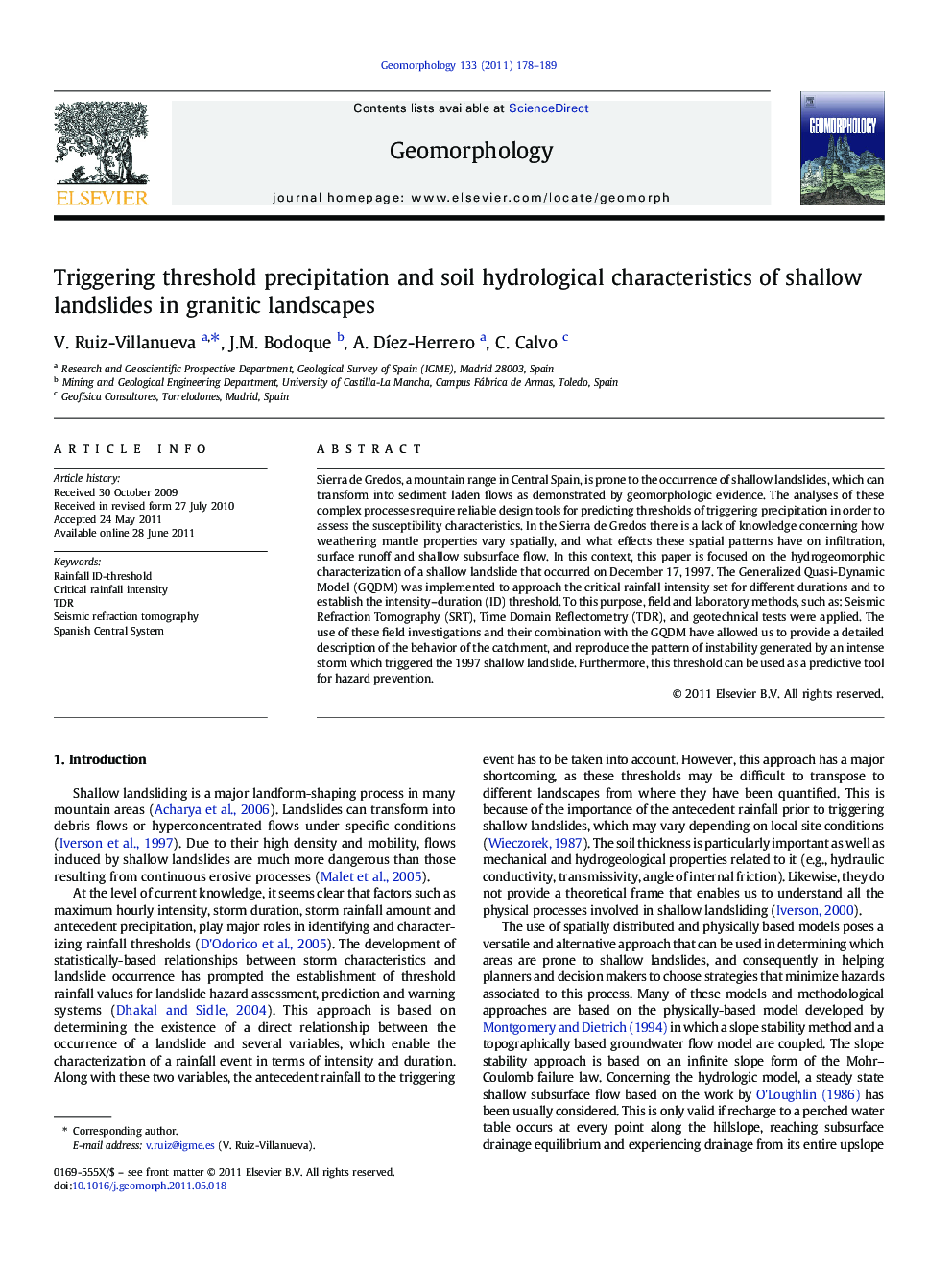| Article ID | Journal | Published Year | Pages | File Type |
|---|---|---|---|---|
| 4685551 | Geomorphology | 2011 | 12 Pages |
Sierra de Gredos, a mountain range in Central Spain, is prone to the occurrence of shallow landslides, which can transform into sediment laden flows as demonstrated by geomorphologic evidence. The analyses of these complex processes require reliable design tools for predicting thresholds of triggering precipitation in order to assess the susceptibility characteristics. In the Sierra de Gredos there is a lack of knowledge concerning how weathering mantle properties vary spatially, and what effects these spatial patterns have on infiltration, surface runoff and shallow subsurface flow. In this context, this paper is focused on the hydrogeomorphic characterization of a shallow landslide that occurred on December 17, 1997. The Generalized Quasi-Dynamic Model (GQDM) was implemented to approach the critical rainfall intensity set for different durations and to establish the intensity–duration (ID) threshold. To this purpose, field and laboratory methods, such as: Seismic Refraction Tomography (SRT), Time Domain Reflectometry (TDR), and geotechnical tests were applied. The use of these field investigations and their combination with the GQDM have allowed us to provide a detailed description of the behavior of the catchment, and reproduce the pattern of instability generated by an intense storm which triggered the 1997 shallow landslide. Furthermore, this threshold can be used as a predictive tool for hazard prevention.
